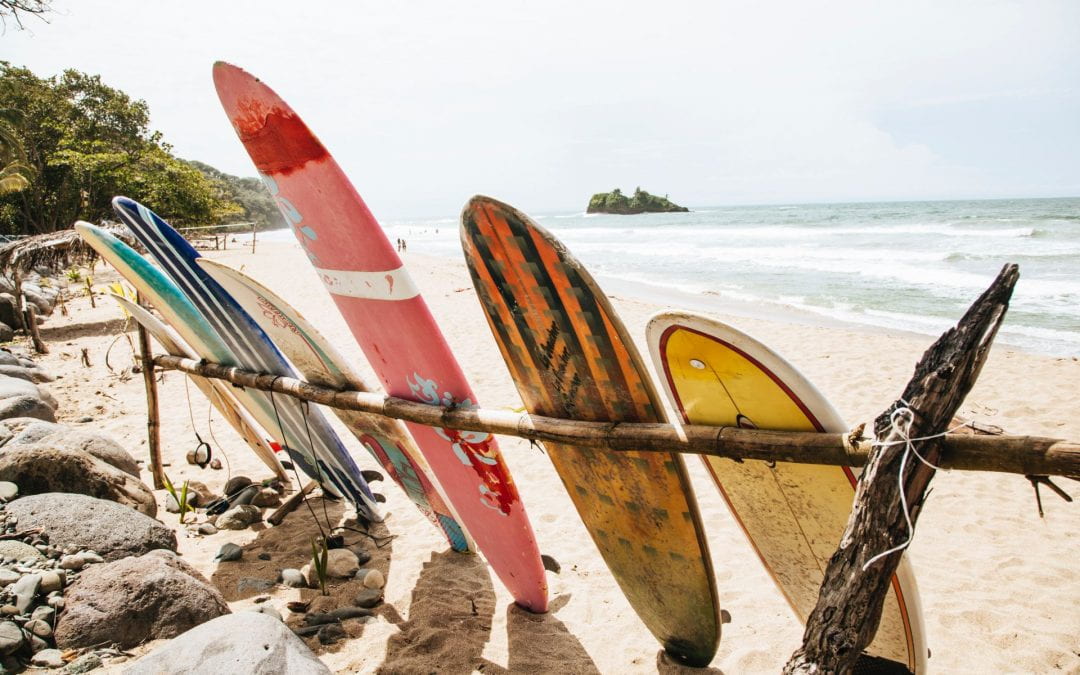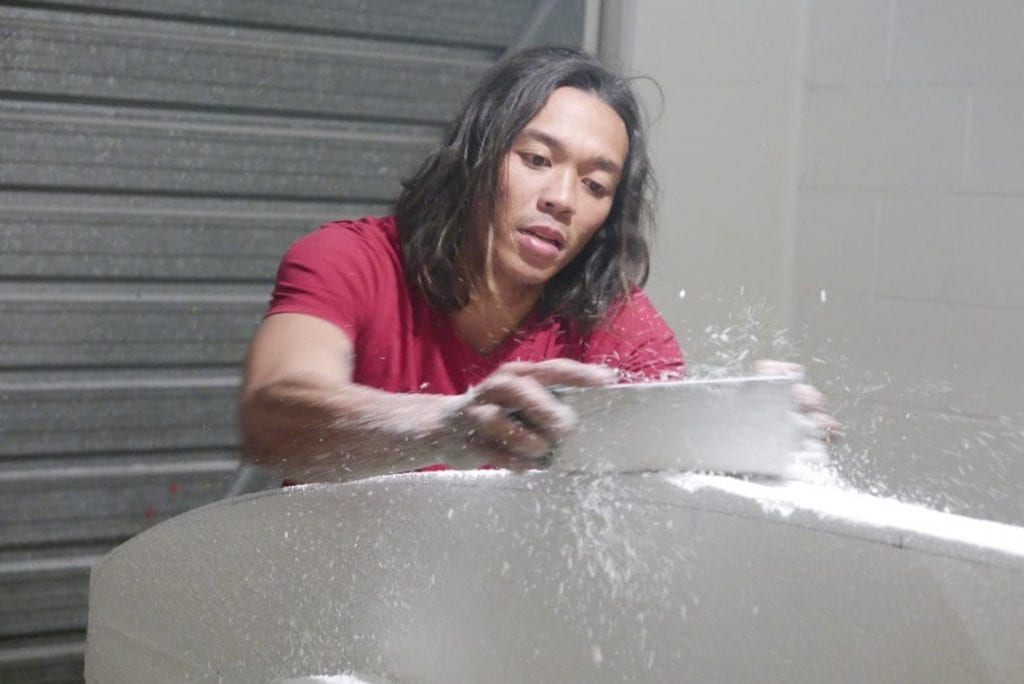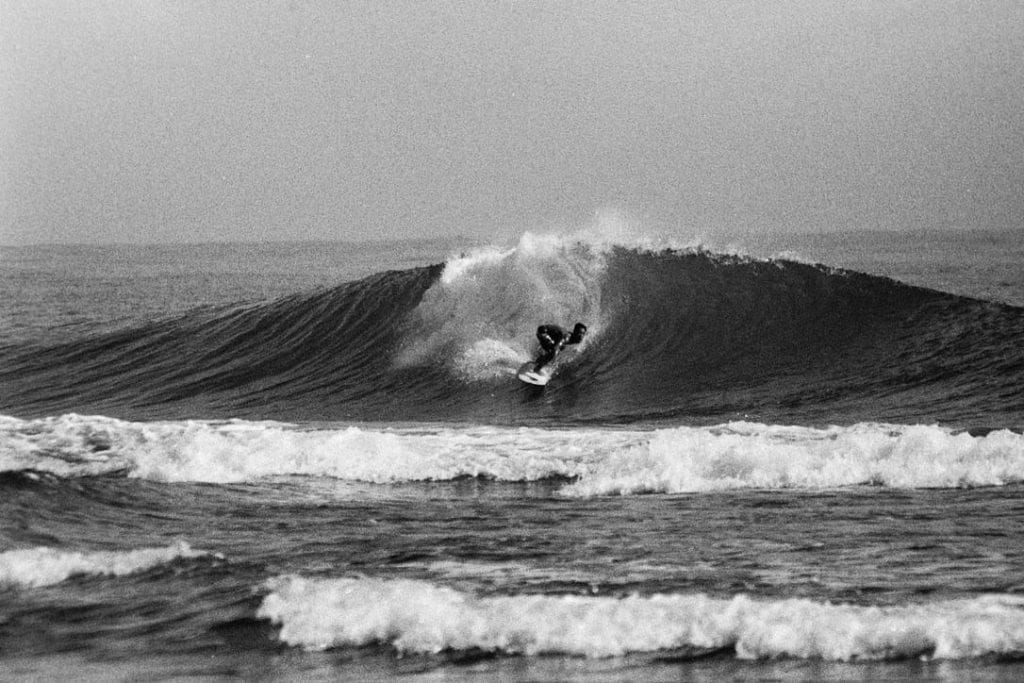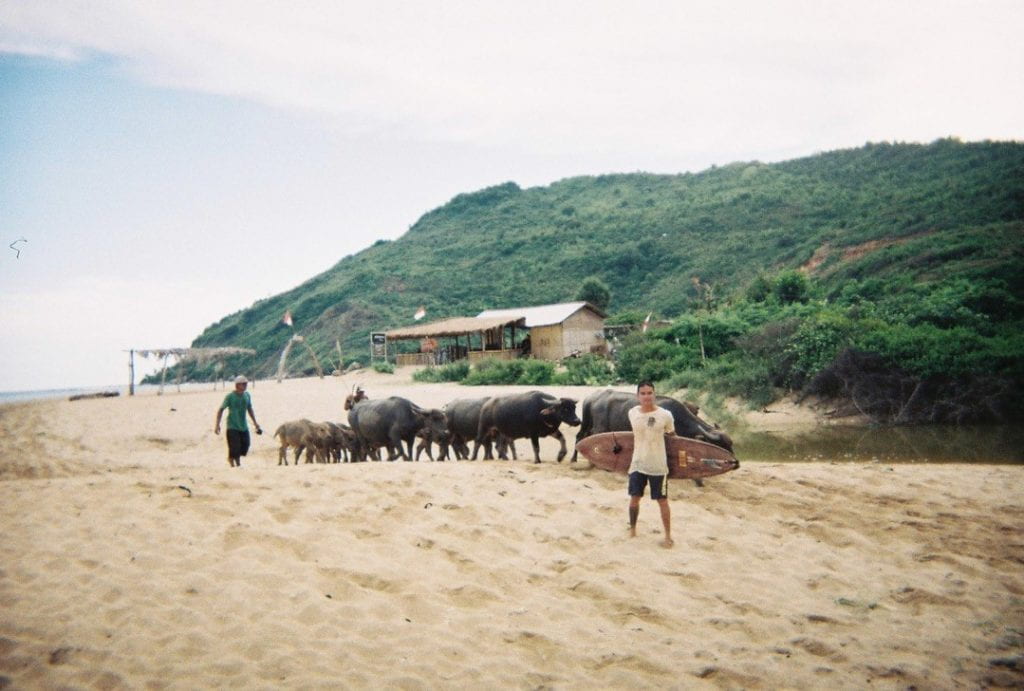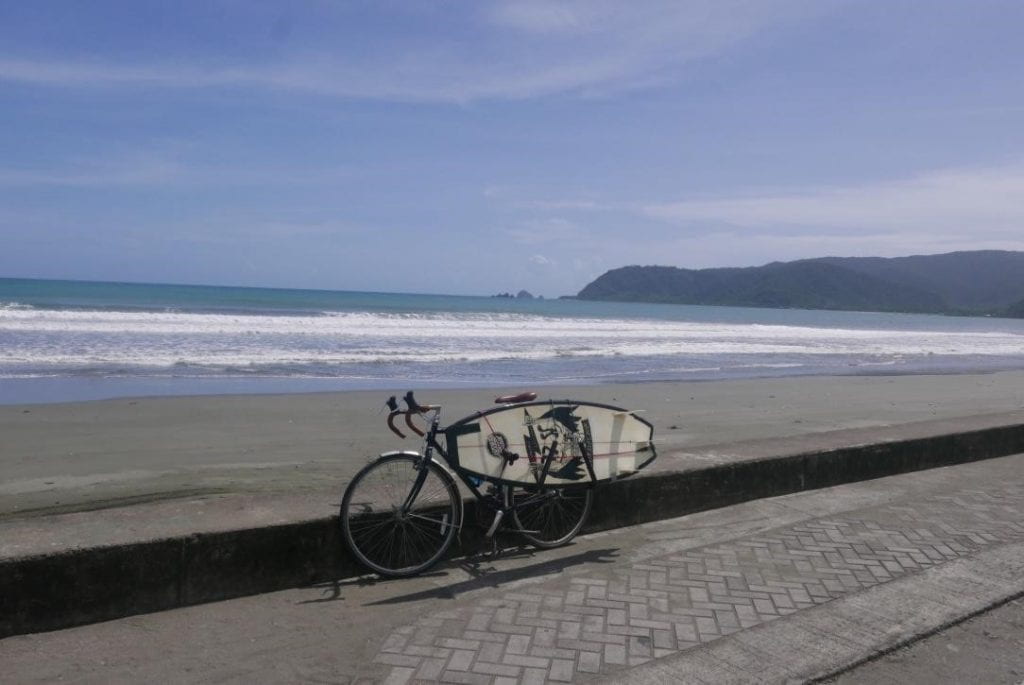By Taga Dagat*
Are surfers selfish when it comes to looking after the environment?
Kiwi surfers often lay claim to being the southernmost surfing community in the world. Located on the tip of the Polynesian Triangle, Aotearoa New Zealand’s swell-exposed coasts are savage to say the least; bent and beaten by Antarctic weather patterns. This makes the island nation no place for a timid surfer and is no venue for anything other than head-to-toe wetsuit cladding. Despite this, surfing has emerged as a popular modern activity. Results from a 2017 New Zealand survey show that one in ten Kiwis have surfed at least once in the last year, with 83% of all surfers residing in urban areas.
Auckland City, home to the greatest concentration of Aotearoa New Zealand’s population, is uniquely positioned between two natural harbours: the Manukau to the east and the Waitamata on the west. The proximity to the ocean and its abundance of wind make this city a great place to be a surfer. It’s therefore not surprising that the bulk of the nation’s surfing population resides in the area. From the city you can easily access beaches on both the west and east coasts of Aotearoa New Zealand in less than an hour. This means that finding the most favourable wind direction is easy. If the wind is blowing from the west, head over to the east coast, and vice versa. This makes it possible to surf the Tasman Sea and the Pacific Ocean in the same day.
It’s a hard thing to explain surfing’s buzz to someone who has never done it, but if you have, and you’re hooked, you know that you’d be willing to move heaven and earth to do it again. But one thing surfers and non-surfers can agree on is the perception that surfing is sustainable, in tune with nature and the surroundings. But how true is this perception of surfing in the modern age? The practice of surfing itself doesn’t affect the environment negatively, but it can be considered a very selfish pursuit once other factors of consumption and production associated with the surfing industry are considered.
Life as a surfboard
When modern surfboard construction shifted from using balsa and redwood to foam, fiberglass and polyester resin, the toxic nature of surfboard construction emerged as surfing’s most evident environmental impact. While these newer materials have allowed significant leaps in board design and performance, they also retain significant drawbacks, including degradation of the environment and result in a non-biodegradable end-product. Most modern surfboards start their lives as foam cores made of Polyurethane, a material that is non-biodegradable and highly toxic to work with. The most popular foam cores are produced by a limited number of suppliers, mostly located in the United States, China and Australia, and have to be transported across the globe through petroleum-intensive methods, such as by ship and by van. During the surfboard shaping process, a shaper will mow down a foam core to form a desired shape and around 20% of the Polyurethane is discarded and may end up in landfills.
The next step in the process involves polyester resins, made of volatile organic compounds (VOC), which are extremely toxic and non-biodegradable. The United States Environmental Protection Agency (EPA) has associated VOCs with damage to the liver, kidneys, central nervous system, and is suspected to cause cancer in humans.
Surfer-shaper Aloes Laudes of East Auckland. Over 20% of Polyurethane foam is discarded during the surfboard shaping process. Photo: author, 2019.
Essentially, the impact of surfboards and their production on the environment may be classified in two ways: their carbon (CO2) footprint and toxicity levels of materials. The carbon footprint refers to the energy used to extract and transport raw materials, as well as produce a board, while the toxicity levels of materials refers to its potential harm to water and land, including soils.
Data collected from a Life-Cycle Analysis (LCA) show that the estimated carbon footprint of a standard 6’0 shortboard causes a massive 270 kilograms of carbon to be emitted during the entire surfboard production process. Surfers often maintain a ‘quiver’ of multiple boards to suit different types of waves and it has been estimated that over half a million surfboards are made every year. When a board breaks, it is often discarded and may end up in landfills where they will not biodegrade. The VOCs in these boards may then seep into the groundwater and soil, contaminating these, making it unsuitable for human consumption or usable for agricultural purposes.
Surf wax
To maintain optimal traction on their boards, surfers regularly apply a generous amount of surf wax onto the surfaces of their boards. This small piece of equipment is so vital that over 6 million bars of wax are used each year. A bar of popular-brand surf wax will typically contain mostly oil or petrochemical additives, including paraffin, which gives off benzene and toluene – toxic substances known for their negative impacts on humans and ecology. Paraffin wax is obtained when crude oil is processed into individual components. This wax will eventually fall off boards and will be deposited in the environment, affecting delicate ecosystems. Plant-based wax, made mostly of soy, has been touted as a panacea of sorts to this problem. While soy may seem better and more natural because it is a plant, it is also a monoculture that is often genetically engineered. Genetically modified soy is industrially grown using petrochemical fertilisers, herbicides and pesticides which can degrade the quality of soils and seep into and contaminate groundwater sources. This farming method has emerged as a threat to biodiversity and food security in some areas. In Argentina alone, a major source of industrial soy, over 300 million litres of these petrochemicals are used to farm over 20 million hectares of land dedicated to growing genetically engineered soy. This use of land and monoculture farming methods has had significant impacts on Argentina’s ecology, food security and cultural identity. To further complicate the problem, there are several ‘eco-friendly’ surf wax brands that are ‘eco-friendly’ by name alone. A German surfing magazine had a closer look at these products and determined that petrochemical additives were found in these ‘eco-friendly’ bars of wax.
Wetsuits
The core ingredient of the modern wetsuit is neoprene foam, a synthetic rubber material. Neoprene is a non-biodegradable material originally used to line landfills. This material may be produced in many ways, but the two most popular types come from non-renewable sources and have significant long-term negative effects on ecology: oil-based and limestone-based neoprene. Oil-based neoprene entails exploration, drilling, extraction and transport of raw materials via ships and trucks across the globe for further energy-intensive production into workable neoprene. Limestone-based neoprene entails extraction, usually through quarrying, and can affect groundwater conditions. Mining operations often remove groundwater to expose the quarrying site and rivers and streams can be altered when the excess water is pumped into upstream and downstream natural channels, degrading water quality and depriving other users of safe and clean water. Neoprene wetsuits typically last for two years, if properly cared for, and surfers would need to maintain season specific suits: one for the warmer months and another, thicker suit, for the colder months. Old suits are often replaced by new ones, creating a cycle and build-up of non-biodegradable waste amounting to around 250 tons of wetsuit scraps every year.
Sunscreen
Due to the elliptical orbit of the earth, the southern hemisphere is located much closer to the sun during the summer months. A New Zealand survey shows that Kiwis mostly surfed during the months of December to February. Ultraviolet (UV) levels in New Zealand during this period have been classified as extreme and necessitate proper UV protection, such as sunscreen, when engaging in outdoor activities. Popular sunscreen products contain substances such as oxybenzone and octinoxate. These are petrochemicals that are non-biodegradable and, when introduced to the oceans, cause diseases in algae that nourish coral reefs and decreases their ability to defend against bleaching. A study has found that coral bleaching will become more frequent in our neighbouring South Pacific islands, and that corals as dominant organisms on reefs will disappear in the next 20-50 years.
Land and air travel
When it comes down to it, all a surfer really needs to go surfing would be a board, right? That might be true when you live in a warm tropical country where the surf is breaking right at your doorstep. But when you live in a country with a coastline as long and rugged as New Zealand then there’s another item you’re going to need: a car. Auckland-based surfers are highly mobile out of necessity – it’s the only way one can make the most of the twin coasts. With a narrow isthmus between the east and west coasts, it is possible for an Auckland-based surfer to surf the Tasman west coast beach of Muriwai in the morning and, when the winds shift, catch the afternoon session at Te Arai or Mangawhai Heads on the Pacific east coast. With no public bus or trains connecting the coastal areas, a wagon loaded with boards inside or strapped onto the roof with a lone occupant driving along the motorway is not an uncommon sight when the waves are pumping.
Cars transporting a single surfer to the west coast beach of Muriwai are a common sight. Photo: author.
Back when New Zealand had highly-regulated car importation policies, owning a car was expensive and considered a big deal. For a surfer back then, owning a car was often prohibitive but having access to one represented freedom and an escape to the coast. This changed drastically in the 90’s when import regulations were relaxed in a bid to modernize New Zealand’s ageing fleet. The result was an influx of cheap Japanese imports and had huge benefits for surfers: 4×4 trucks became the standard, giving off-road access to more remote surfing spots. New Zealand now has the highest per capita car ownership rate in OECD, yet also maintains a car fleet that are relatively old and emission-intensive by OECD standards. This also translates to a higher fuel consumption per kilometre of travel, on average. A recent study has found that among the activities associated with surfing, driving dominates greenhouse gas emissions.
Surfers from tropical countries, such as the Philippines, have a significantly lower carbon footprint compared to other surfers since they do not travel far distances nor have to wear wetsuits, but are more prone to the negative effects of climate change. Photo: author.
During the southern hemisphere winter months of July to September, storms from Antarctica produce swells that push up into the Indian Ocean and the South Pacific. This season signals a time for surfers from colder places, such as New Zealand, to go on an annual pilgrimage to warmer surf meccas such as the Indonesian archipelago, as well as the South Pacific island nations of Fiji and Tahiti. Getting to these destinations from New Zealand entails multiple flights that produce greenhouse gasses, such as CO2, from fuel combustion. The International Air Travel Association has identified the aviation sector as having contributed over 2% of annual global carbon emissions, such that a few hours of air travel generates more greenhouse gases that driving for a year. Increased international surf travel has also produced significant and long-lasting effects for these destinations, such as tourism-related land dispossession and resource grabbing on the Indonesian island of Bali, a popular destination for Kiwi surfers during the winter months. Traditional agricultural land has been converted into ‘eco-conscious’ cafés and yoga retreats, while fresh water has been diverted from traditional wet-rice farms to the pools and showers in boutique hotels and spas.
The author during a pilgrimage to the Indonesian archipelago. Photo: Chloé Romero.
Should you stop surfing?
As we get more conscientious, our lifestyles have to become more sustainable or get left behind altogether. It can be agreed that surfing has a net positive impact on the world, but new technologies and the availability of new information should be leveraged to conserve our ecology and our overall experience of surfing. The following are a few suggestions that Auckland-based surfers may consider:
- Live closer to the water and surf locally. If you are serious about surfing and minimising your carbon footprint, you will live near the water and surf locally. There will be no carbon emissions if you walk or cycle to your home break.
- Buy a fuel-efficient vehicle. The difference in carbon footprint between a pick-up truck and a sedan is large. Consider shifting to a more energy-efficient vehicle. Options include modern vehicles, including hybrids and electric cars.
- Carpool. Consider riding with others instead of driving alone to go surf.
- Demand for public transportation. Popular surf spots in other countries are connected by public bus or train, cutting down carbon emissions and building a stronger sense of community among surfers.
- Repair and repurpose broken boards. This will skip the manufacturing process entirely and will result in the absence of toxic emissions, and reductions in carbon footprint. These can also be resold or donated to other surfers.
- Shift to ‘next generation’ surfboard materials made from cleaner and stronger materials. These materials have a few performance drawbacks but produce longer lasting boards with a significant reduction in carbon footprint vs. current popular surfboards.
- Build acceptance of these new materials. Acceptance of new materials is a major market barrier for manufacturers. Building acceptance of new materials comes hand-in-hand with educating and engaging with other surfers to create a demand for these less damaging materials.
- Certify and incentivise cleaner materials and modes of production. Financial incentives from governments are useful in the early stages of introducing innovations to the market, but its importance is often overestimated.
- Invest in wetsuits made from better materials. This includes Yulex neoprene, which is more expensive, but produces less CO2 during manufacturing compared to synthetic oil-based wetsuits. Yulex is sourced from renewable rubber sources and is lighter and more flexible than other types of neoprene.
- Use reef-safe sunscreen. These include mineral-based sunscreen with zinc oxide and titanium dioxide. These are less harmful for human use and are not linked to coral bleaching.
Living close to the water and walking or cycling to the beach has many benefits for surfers and the environment. Photo: author.
References:
Davies, H.J.B., (2009). Environmental Issues in Surfing – Behaviours
Calculator https://www.decarbonated-sports.co.uk/calculators/full-calculator
Surfer Magazine https://surfersmag.de/special/surfwaxtest-die-dunkle-seite-des-kobooms.html#22FDKOYdtd0qB0Oc.97
Ministry for the Environment https://www.mfe.govt.nz/sites/default/files/media/media/our-atmosphere-and-climate-2017-final.pdf
https://wavelengthmag.com/need-talk-wetsuit-toxic/
Greensurfshop.com http://www.meetlagunabeach.com/surfings-dirty-secret-toxic-pollution-presents-opportunity-for-environmentalists/
Sport New Zealand Survey https://sportnz.org.nz/assets/Uploads/2013-14-Sport-Profile-Surfing.pdf
This article has been published under a pseudonym at the author’s request
This article was prepared as part of a postgraduate course on Ethics and Governance in International Development directed by Professor Andreas Neef of the University of Auckland’s Development Studies programme.
Disclaimer: The ideas expressed in this article reflect the author’s views and not necessarily the views of The Big Q.
You might also like:
Q+A: How is climate change reshaping oceans and marine life?
Q+A: Toxic waters: How bad is pollution in our oceans?
